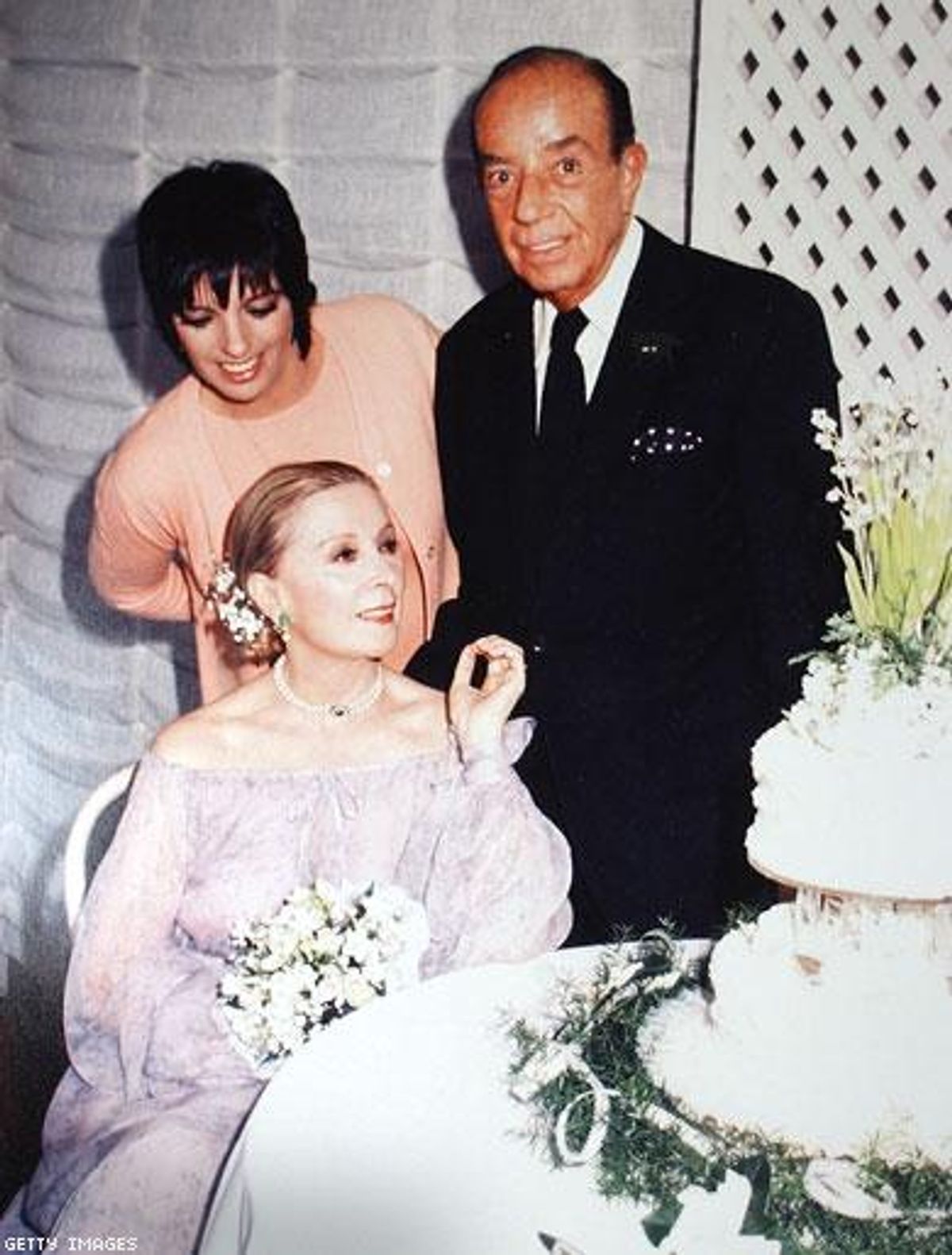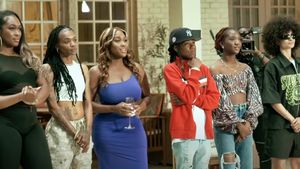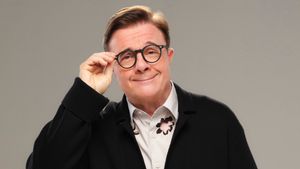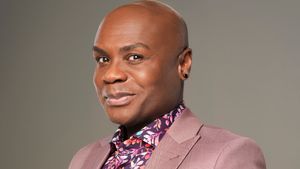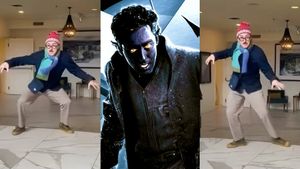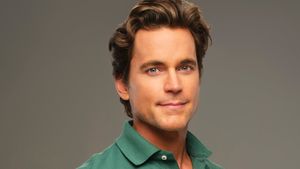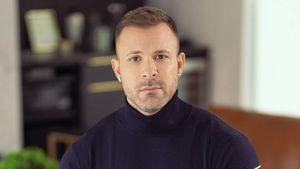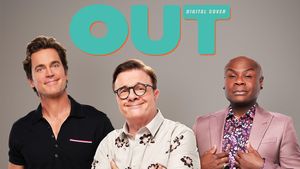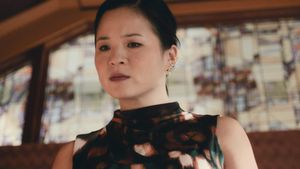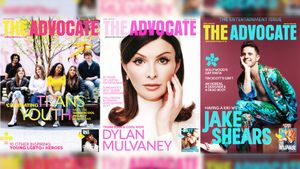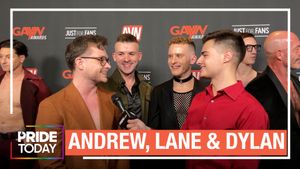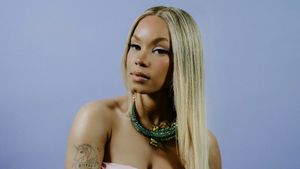Vincente Minnelli rose to fame as the flamboyant, wildly stylistic director of such beloved MGM musicals as An American in Paris , Gigi, and Meet Me in St. Louis. Although these films endure as Hollywood classics, Minnelli's reputation as a filmmaker is often eclipsed by a fascination with his complex personal life. Minnelli was married four times, including a short-lived union with troubled actress Judy Garland that resulted in daughter Liza, and his sexual orientation has long been the subject of gossip and speculation. While many of his closest intimates never doubted his true identity as that of a gay or bisexual man, Minnelli remained deeply private about the issue and avoided it completely in his 1974 memoir, I Remember It Well.
Now, 35 years later, film critic Emanuel Levy seeks to offer a more honest and thorough examination of the remarkable career and complicated life of the late director with the fascinating new biography Vincente Minnelli: Hollywood's Dark Dreamer. Having previously authored a book about gay director and Minnelli contemporary George Cukor, Levy is the first to write a full-length biography of the legendary filmmaker and, in researching his enigmatic subject, was granted special access to letters and correspondence from Minnelli's last wife.
Perhaps the most striking revelation in Hollywood's Dark Dreamer is evidence that Minnelli did, in fact, live as an openly gay man in New York prior to his arrival in Hollywood. Unfortunately, the town that made him a legend also pressured him back into the closet, and while moviegoers certainly benefited from the sublimation of Minnelli's sexuality into art, one wonders how things might have differed had he lived in the modern era.
Advocate.com recently had the chance to dish with Levy about his provocative and revelatory new book right before he took off for the Cannes Film Festival, where Vincente Minnelli: Hollywood's Dark Dreamer will have a lavish launch party, presumably in old Hollywood style.
Advocate.com:In the introduction to your book, you note that dozens of biographies have been written about other famed directors like Howard Hawks and John Ford. Why do you think Minnelli's been neglected up until this point?Emanuel Levy: I don't have a good reason for the neglect, but I benefited from being -- shockingly -- the first biographer. Some of it could be that he was painfully shy and did not write much and his own memoir was very subjective and biased -- it doesn't talk at all about his sexuality. Vincente was full of contradictions and he had a troubled sexuality, so maybe people thought [the subject] was troubled waters. But everyone knows when you write about a major director, you have to deal with his personal life.
So what inspired you to brave the "troubled waters" of this remarkable filmmaker's life? Well, I wrote a biography about [film director] George Cukor, and in that book I drew some comparisons between Cukor and Minnelli because they were both top directors at MGM and competing for the same projects -- only Cukor was openly gay. Everybody knew at the studio and outside the studio, while Minnelli was an enigma. He was openly gay in New York -- we were able to document names of companions and stories from Dorothy Parker. But when he came to Hollywood, I think he made the decision to repress that part of himself or to become bisexual. Anyway, I think Minnelli's a brilliant director ... a much more important director than George Cukor, in fact, and very different in his approach. Cukor's an actor's director, whereas with Minnelli the acting's good, but he was also a real stylist -- a visual director. Anyway, there are many similarities between the two, but there was no socializing between them, and that intrigued me. In general, I was intrigued by the different models of brilliant gay directors and how they lived and operated in Hollywood.
In researching your subject, did you meet with any resistance inquiring into his personal life? Actually, my book was initiated by Minnelli's fourth wife and widow, a lovely lady named Lee Anderson Minnelli. She was his last wife and took very good care of him. I think he was the happiest with her. They met rather late. Anyway, she read my Cukor book and said, "Can you please do a book about my husband?" And I met with her in Beverly Hills -- I was there six or seven times -- and she gave me an invaluable collection of letters that no one had seen, and the book is based on many of those letters.
Did you attempt to interview Liza? I tried to interview her four times. She always had an excuse. Finally Lee Anderson said to me -- it was like a Freudian slip -- she said, "She doesn't want to talk to you." And I know that Liza did not want to meet with me because she was well aware of the Cukor book and knew I'd bring up her father's homosexuality. Looking back, I'm glad she didn't talk because Lee Anderson didn't make any conditions and said I could use the letters whichever way I wanted, whereas Liza might have requested to read the manuscript and I would have objected. This is definitely not an authorized work.
In your book you describe Lester Anthony Minnelli as a shy, stammering child who sometimes slipped into his mother's clothes. Describe how he became Vincente, the worldly aesthete? Well, he reinvented himself -- I think it happened sometime in the 1920s while he was in Chicago. He became an effete, a dandy, a snob. One of the first books he read -- and it's really an interesting story of how a book can change one's life -- after reading a biography about the flamboyant British painter James McNeill Whistler, he modeled himself after him. He became sophisticated and a snob and cultured, and this came across when he met Judy, who was exactly the opposite.
Can you explain the initial attraction between Minnelli and Garland? Well, I have a theory that runs contrary to the one developed in the biographies -- and there are, like, 50 books about Judy as you may know -- and it is that Judy always wanted to look beautiful. It sounds very simple, but that's one of the reasons. If you look at Meet Me in St. Louis, she has never been more beautiful than Minnelli made her look, and Judy was very, very sensitive about her looks. Plus she was attracted to older men, but not for sex. She has a complicated history too, you know. She slept with women occasionally. However, she never acknowledged that she was bisexual.
So did they have some kind of understanding or an open marriage? The marriage between Judy and Minnelli was not open. Although during the marriage she slept with Frank Sinatra and other men. But Judy was very insecure, paranoid, and jealous; at one time, during the making of The Pirate, she accused Minnelli of being in love with Gene Kelly, her costar, and favoring him over her. Apparently, she threatened him with suicide when she caught him in compromising positions. She caught him twice -- once with a bit player and once with the gardener. For the most part, during his marriages Minnelli repressed his homosexuality, and after Judy his relationships with women were more social than erotic.
Can you put that relationship in historical context in terms of tabloid presence? Well, you know, I interviewed Jane Fonda when her book came out and I asked her what the difference was between being a star back then compared to now. She said there was no scrutiny -- "We could do drugs and have orgies and there was no press." But Vincente was a director, and directors are behind the camera, so I don't think they're as interesting for the paparazzi. But someone like Cukor would have been three times as careful today as he was in the '30s and the '40s because of the Internet. As for Minnelli ... when he arrived in Hollywood, and I heard this from two people, he was wearing makeup because in New York it was accepted. It was bohemian. He had been surrounded by the Gershwins, by Dorothy Parker, and they could care less if he had a boyfriend. But I found a note that the studio was upset about [the makeup] and so I think he immediately changed his lifestyle. Instead, he channeled his homosexuality or his sexual phobias and tensions and anxieties directly into his work. You can read his movies for their sexual politics.
In which of his films do you think the channeling is most obvious? Of course the prime example is Tea and Sympathy. That's a personal film about masculinity. There's one scene in which the lead character's roommate instructs him in how to walk as a man. What's most fascinating is that Minnelli was very good with color schemes and he played with shades of blue in the film. The darker the blue, the more masculine the character. When Tom [John Kerr] goes to see a prostitute to prove his masculinity, he's wearing a dark blue suit. So light blue is for sissies, dark blue is for macho. I also get a kick out of analyzing An American in Paris -- the character played by Nina Foch is like a sugar daddy. Her character's name, "Milo," is even masculine. Gene Kelly's basically a gigolo -- a painter supported by a rich woman. Also interesting is Home From the Hill, in which there are three types of masculinity. There's Robert Mitchum, who is the ultimate macho patriarch, then there's the bastard son, George Peppard, and then George Hamilton, who's the mama's boy. The whole movie is about Hamilton detaching himself from his mother and standing on his own. The way in which the gun is used in the film is like a penis. It's Freudian melodrama. Even in Designing Woman, the comedy with Lauren Bacall, her best friend is a choreographer who's basically Minnelli, somebody who Gregory Peck puts down because he's too sensitive. Minnelli always suffered from being effeminate.
What was Vincente's relationship like with Liza? He was the best father. He really spoiled her because he had shared custody -- whatever Liza wanted, Liza got. Vincente would dress her up, bring her to MGM. He felt guilty because Judy was a troubled mother and woman and Liza suffered, so he was very devoted to her and she was very devoted to him. Plus the look of Liza in Cabaret comes directly from Minnelli -- I have the correspondence, you know -- because he recommended to Bob Fosse how she should look. He was very instrumental in her career early on.
What was Minnelli like as director? He was expensive and his movies took forever to make, but he's one of a few who've had two pictures win the best picture award -- An American in Paris and Gigi. Plus his movies made money. So he brought a lot of prestige to the studio. However, he was often described as passive-aggressive. Jack Nicholson said in interview that he could spend days shooting a vase of flowers from different angles [during production of On a Clear Day You Can See Forever ] but never give him an instruction about how to play his part. He was very particular, but he was also inarticulate, so he needed the help of people like Ed Gibbons, who was MGM's art director. His career declined as soon as the studio system declined. Unlike Orson Welles, he and Cukor were not producers and they were not writers -- they needed all the support the studio system would give them.
You've been a film critic for years, reviewing for both Variety and Screen International. How has the field changed since you started? The Internet changed things radically. Plus there's not much serious criticism because of the economy and the market. The market is dominated by teenagers -- you see that every week with Star Treks and Terminators and horror movies doing so well. Half of my friends are unemployed; it's very sad. It's not a good time to be a film critic. The best time was in the '60s and '70s during the age of Andrew Sarris and Pauline Kael. I benefited from the rise of independent cinema because I was always intrigued by the types of movies very few critics wanted to write about -- independents, documentaries, and foreign language films.
You pride yourself on being an Oscar prognosticator. Have you seen anything this year that's Oscar-worthy? I saw the best picture of the year as of today -- Up, the new Disney animated film. I gave it a straight A on my site . It's terrific. It's the opening film of this year's Cannes festival. That will be a contender. But the American cinema is so divided into seasons. The summer season is all about special effects, blockbusters, and popcorn movies. The good movies begin in the fall.
You can tell from reading your book that you love your subject. So, if you're trapped on a deserted island and can bring only one Minnelli film, which is it? Give me three.
OK, you can have three. I'll take two musicals and a melodrama. Meet Me in St Louis,The Band Wagon, and the melodrama The Bad and the Beautiful.
And now you're off to Cannes. Yes, it's my 26th Cannes. The book is going to be launched there [last Saturday] with a party. Minnelli's almost like a god in France. It's the French critics who discovered him, by the way.
